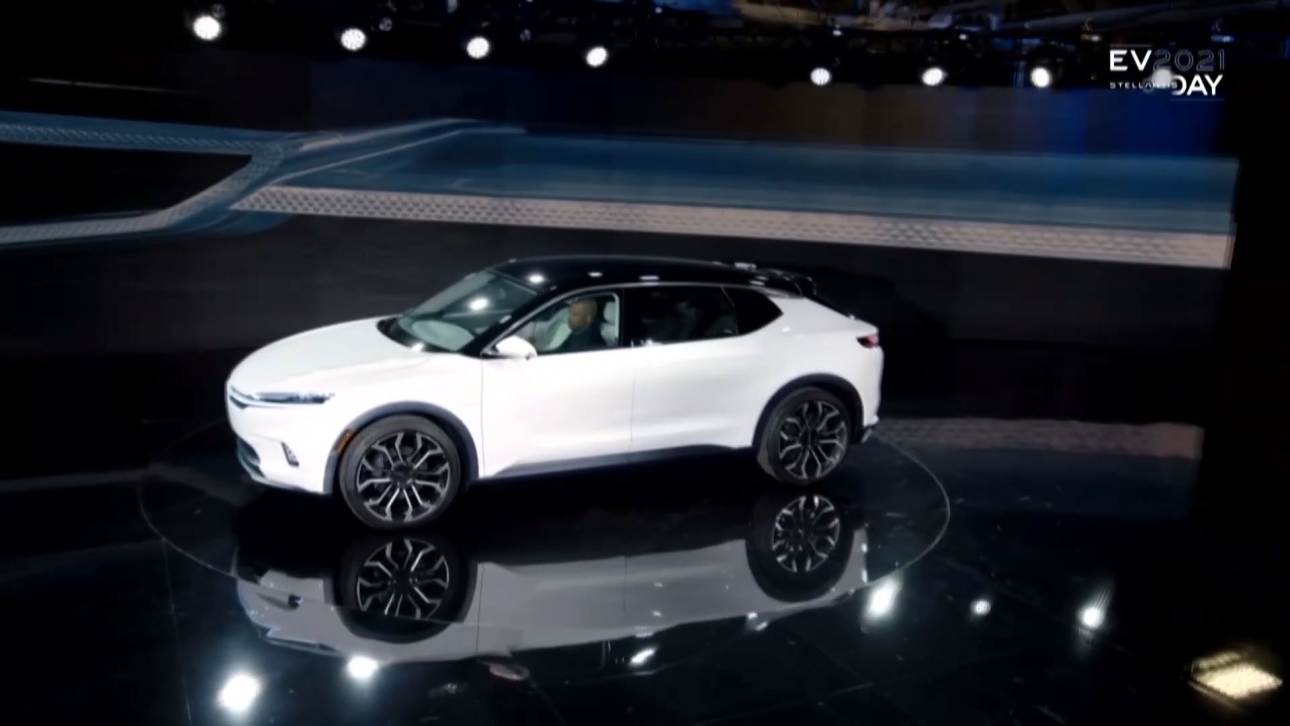Tesla will lose one of its biggest customers - costing it nearly $500 million.
That’s because Stellantis, the 14-brand strong conglomerate formed by the merger of Fiat Chrysler Automobiles and Peugeot-Citroen’s PSA Group, has committed to building its own range of electric vehicles. Prior to the merger FCA was spending approximately $480 million buying carbon credits from Tesla to ensure it met European and North American emissions standards, compensating for its lack of EV models.
Stellantis made that decision back in May but overnight explained how it plans to achieve its own low-emissions future by investing €30 billion (approx. $47b) in the next five years into four new EV platforms, three electric motors and a pair of battery technologies that will be built across five gigafactories.
Stellantis CEO Carlos Tavares said the decision to move away from buying Tesla credits was an “ethical” one, believing that the brand should meet emissions regulations on its own rather than take advantage of the credit-purchasing loophole.
The aim of this investment is to massively increase its sales of EVs and plug-in hybrids in Europe and the USA by the end of the decade. By 2030 Stellantis hopes 70 per cent of its vehicles sold in Europe will be low-emission and 40 per cent in the USA; that’s up from 14 per cent and just four per cent the company is forecasting in those markets respectively in 2021.
Tavares and his management team laid out the plan in its first EV Day for investors overnight. Under the plan all of its 14 brands, from Abarth to Ram will begin electrifying, if they haven’t already.
“Our electrification journey is quite possibly the most important brick to lay as we start to reveal the future of Stellantis just six months after its birth, and now the entire company is in full execution mode to exceed every customer’s expectations and accelerate our role in redefining the way the world moves,” Tavares said. “We have the scale, the skills, the spirit and the sustainability to achieve double-digit Adjusted Operating Income margins, lead the industry with benchmark efficiencies and deliver electrified vehicles that ignite passion.”
Some of the highlights of the plan are:
- Four new EV platforms - STLA Small, STLA Medium, STLA Large and STLA Frame.
- Three powertrain options all based around a scalable inverter to save costs.
- Nickel-based batteries that the company believes will allow for cost savings while still providing long-range and ultra-fast charging.
- Goal to be the first car brand to market with a solid state battery in 2026.
The basic plan for each new platform was also laid out as follows:
- STLA Small, will be primarily used for Peugeot, Citroen and Opel models, with a range up to 500km.
- STLA Medium, to underpin future Alfa Romeo and DS vehicles, with a range up to 700km.
- STLA Large, will be the basis for multiple brands including Dodge, Jeep, Ram and Maserati, and have a range up to 800km
- STLA Frame, this will be reserved for commercial vehicles and Ram pickups, it will also have a range up to 800km
A key element of the plan is that the battery packages will be modular so both the hardware and software can be upgraded over the life of the vehicle as the technologies improve. Stellantis will invest heavily in a new software division that will focus on creating over-the-air updates for new models.
The module powertrains will consist of:
- Option 1 - Up to 70kW of power/400-volts electrical system
- Option 2 - 125-180kW/400V
- Option 3 - 150-330kW/400V or 800V
The powertrains will be able to be utilised as front-, rear- or all-wheel drive as well as Jeep’s trademark 4xe set-up.
Some of the key brand decisions announced by the company include:
- Ram will introduce an electric 1500 by 2024 based on STLA Frame.
- Ram will also introduce an all-new model based on STLA Large, to compete with the likes of the Toyota HiLux and Ford Ranger.
- Dodge will introduce an ‘eMuscle’ car by 2024.
- Jeep will have EV options of each model by 2025 and introduce at least one all-new “white space” model.
- Opel will go all-electric by 2028 and introduce an electric Manta sports car.
- An all-new Chrysler SUV concept was shown-off featuring a hi-tech cabin.
- Fiat and Ram will launch fuel cell commercial vehicles beginning later in 2021.




-2.jpg)


.jpg)

.jpg)
.jpg)



.jpg)
.jpg)

.jpg)
.jpg)
.jpg)
.jpg)


.jpg)





.jpg)
.jpg)

Comments